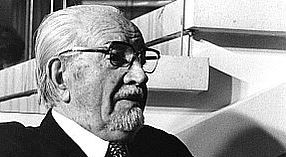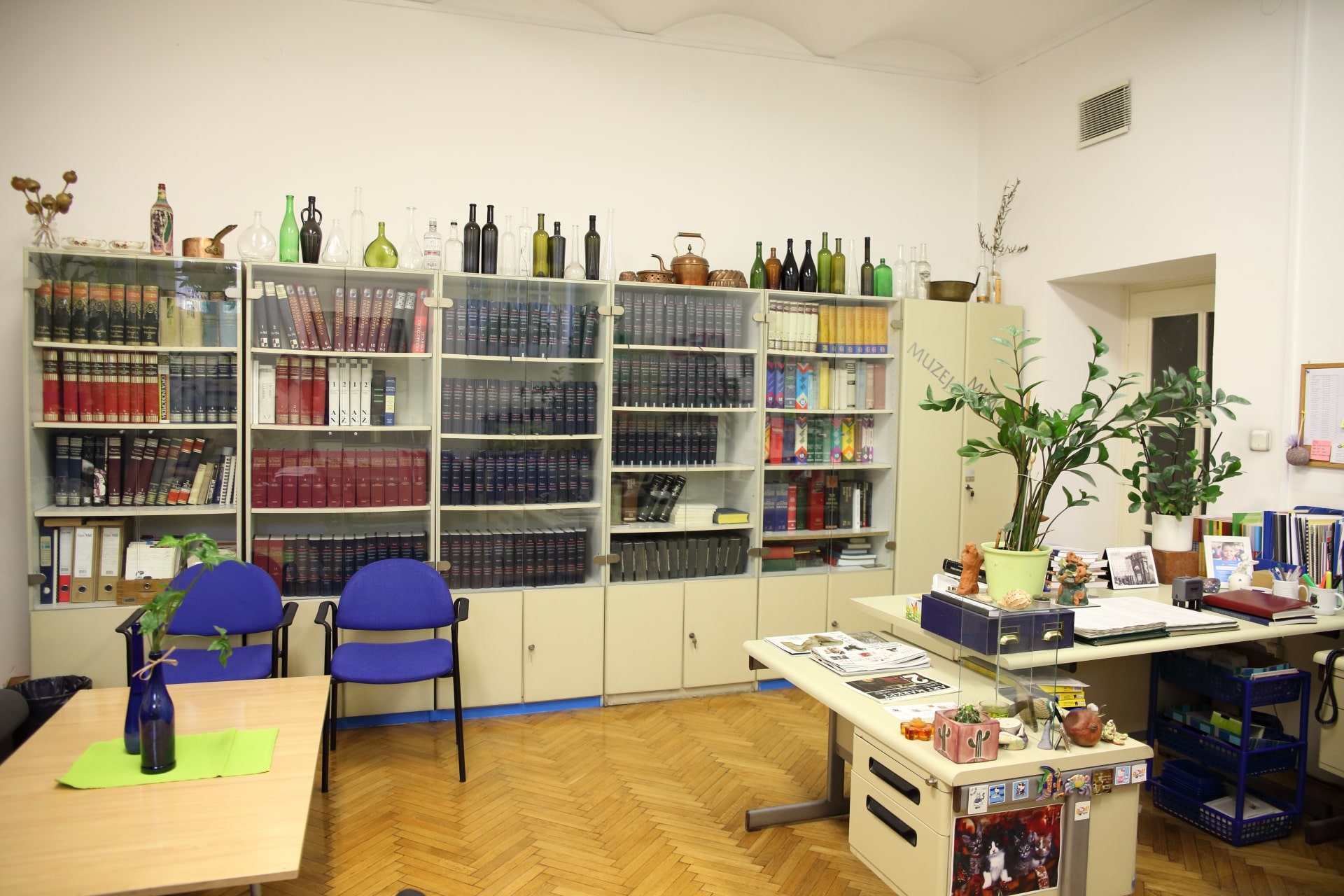06.09. - 30.09.2018.
Izet Đuzel - Retrospektiva

MUZEJ MIMARAIZLOŽBA: IZET ĐUZEL - RETROSPEKTIVA6. - 30. 9. 2018.*** Muzej Mimara 6. rujna otvara retrospektivnu izložbu Izeta Đuzela. Akademski slikar i kipar koji svojim intenzivnom radom kroz gotovo pedeset godina umjetničkog stvaranja ostvaruje značajan doprinos hrvatskoj likovnoj umjetnosti, daruje nam prigodu upoznavanja sa svojim iznimnim stvaralaštvom u velikom opusu od osamdesetak radova, slika i skulptura.Dosada su mnogobrojne izložbe u zemlji i inozemstvu prezentirale dio po dio Đuzelovo likovno stvaralaštvo, a sada se upriličuje retrospektiva u Mimari koja se može razgledati do kraja mjeseca rujna.***OKO VIDI, DUŠA PAMTI, DUH ĆUTI, RUKA IZNOVA STVARAVelika, pobjedonosna, moćna rijeka modernizma u slikarstvu, ali i općenito in artibus, tiho se, gotovo neprimjetno, našla u estuariju te se primirila u velikoj, ravnodušnoj delti postmodernizma.Đuzelovo ishodišno umjetničko ozračje bijaše ta modernistička rijeka: prije nekoliko desetljeća još hučeća, neprikosnovena i neupitna. I nikada nije došao u napast da to svoje izvorno nagnuće, svoje prirodno duhovno stanište promijeni.Još Michielijev student, Đuzel iskače na javno likovno poprište 1969. godine kao preteča Biafre: poput zagrižljivog bombaša, niotkuda, s posvemašnje margine pred publiku baca skulpture obješenih – happening u gesti humanističkog hiperekspresionizma. Iz današnjeg se motrišta ta radikalna gesta može shvatiti kao zakletva nepotkupljivosti pred tronom Umjetnosti, kojoj je međutim bespoštedno služio čuvajući ideal Ljepote, a ne Šoka – kako bi njegov prvi korak mogao dati naslutiti.Jer Đuzel-kipar, koliko nam je dano naslutiti iz relativno malobrojnih preživjelih djela, nipošto nije Michielijev epigon. U nekoliko katoličkom tematikom inspiriranih ostvaraja plijeni pozornost dinamičnim ravnovjesjem kompleksnih sastavnih inačica (Golgota, 1969) i profinjenošću vertikala, nadasve pak posvemašnjom „apsorpcijom zanata“(Pieta,1970). Kao skulptora osobito ga privlači dijalektika suptilnog prožimanja disparatnih materijala (Svjetlucavi izdanci – Glittering Sprouts, drvo/mesing, 1985). Posavski krajobraz kao metafora svijetaPars pro toto (dio umjesto cjeline) stilska je figura iznjedrena u starorimskoj poeziji, koja označava uporabu određenog pojma u funkciji cjeline: naprimjer, „jedra“ predstavljaju „brod“. Danas bismo mogli reći da se radi o varijanti metafore.Đuzelov umjetnički kredo jest posavski krajobraz kao metafora svijeta. Izet Đuzel slikar je neiscrpive složenosti pejsaža. Ta tvrdnja pretpostavlja odabir najtežega mogućeg umjetničkog puta te priječi uspostavljanje rutinske matrice. Sebi svojstvenom skromnošću Đuzel tvrdi da je taj magistralan opseg otpočeo kao „ležerno istraživanje žuborenja voda“. Danas možemo ustvrditi da se radi o najuzbudljivijem poglavlju suvremenog hrvatskog slikarstva.U predratnom periodu slikar polazi od postulata postimpresionizma suptilnim kolorističkim gamama odmjeravajući suodnose nebesa, voda, krošanja, slapova. Đuzelovo kolorističko majstorstvo ne bi toliko fasciniralo da nije poduprto briljantnom strukturnom konzistencijom.Čuvajući se rigidne samodostatnosti dripinga i tašizma,u kojima aleatorična Slučajnost ipak postaje sustvaratelj, Izet Đuzel svoje nosive motivske egzistencijale suptilno inkorporira u raskošne likovne tvorevine: njegove tamne, nerijetko ljubičaste game bivaju iznenadno razlistane crvenim konvulzijama, zasjeklinama na duši krajobraza. Lirik koji predobro poznaje naličje nježnosti.Đuzelovo je stvaralačko načelo „načeta priča“: nema dakle izvanlikovnog narativa koji bi trebalo samo marno ilustrirati. Slikar ne želi nametati literarnu interpretaciju svome gledatelju, pa čak ni samome sebi. On, plenerist po najdubljoj vokaciji, na svoja platna prenosi sinestetičku interpretaciju onoga što oko vidi, duša pamti, duh ćuti. Otuda s tih platna struji ćuh memorije i lahor uništene povijesti – novo, uzbudljivo, gotovo optimističko ozbiljenje Ljepote kao krajnje istine umjetničkog pregnuća.Rat u BosniRat u Bosni slikar doživljava kao apokaliptičko prevrednovanje sviju vrijednosti, ali, paradoksalno, posljedice toga rata na krajobraz pokazuju nam se danas kao feniksovsko objavljenje za Izeta Đuzela!Oskrnavljeni Eden, ta predratna Posavina – siromašna, umilna, idilična, s vječnim melankoličnim biljegom trošnosti, zaboravljenosti – kao da je morala proći kroz pakao razornoga, grješnog ratnog uništenja da bi se u svojoj užasnoj okljaštrenosti slikaru rasprostrla kao Novi prizor. I tu potreseni umjetnik prepoznaje sudbinsku nužnost svoje zaključne misije. Ohrabren tom spoznajom Izet Đuzel, u magistralnom pregnuću svoje pune zrelosti, sučeljuje Arkadiju iz žive slikovnice svojih uspomena s poraznim prizorima demonskog divljanja boga Marsa. Iz te sinteze ništa dragocjeno nije moglo biti izostavljeno: svježi grobni spomenici (nišani); postiđene vode, kanda otkupljene čudestvenom dinamikom obnove prirodnih energija; srušeni riječni kućerci poprskani neuništivim šikljajima slapne modrine! I onda, poput glazbene kadence, metafizički se srh pomalja u reminiscencijama Pakla, lelujavim prikazama pjeva pobjednika, žrtvovanim srebreničkim kostima nevine bjeline.Pjesnik pamti (Czeslaw Milosz), slikar iz „svjetlucanja truleži“ (I.Đ.), iz naizgled posvemašnje destrukcije uzdiže nov, uzbudljiv umjetnički svijet.U najrecentnijim platnima dramatičnost prizora biva potencirana moćnim kolorističkim masama koje se primiču zajedničkom nazivniku apstraktnog ekspresionizma. Premda sâm Đuzel govori o „materiji koja je pomalo amorfna“, valja primijetiti da struktura slike nipošto ne podliježe labavim zakonima uzrujanog stvaralačkog trenutka. Monumentalnost potencirana proširenjem prizora u format diptiha ostvarena je snažnom, sveprisutnom prostornošću: Izet Đuzel nikada nije stvarao – simbolički ni metijerski – površna djela.U nenapisanoj povijesti hrvatskog likovnog modernizma Izetu Đuzelu pripast će privilegirano mjesto, tako jasno, očigledno i neupitno u ovom izložbenom postavu.Prof. dr. sc. Aleksandar Bravar THE EYE SEES, THE SOUL REMEMBERS, THE SPIRIT SENSES, THE HAND CREATES ANEWAbundant, victorious, powerful river of modernism in painting, but also generally in artibus, has silently, almost imperceptibly sneaked into the estuary and came to rest in the vast and indifferent delta of postmodernism.This modernist river constituted Đuzel's initial artistic atmosphere: a few decades ago, it was still roaring, absolute and unquestionable. Never was he tempted to alter this original inclination of his, to change his natural spiritual habitat. In 1969, still a student of Michieli, Đuzel broke into the public arena of visual arts as a forerunner of the Biafra group: he came from the margins, appeared as if out of nowhere, like a fanatic bomber, confronting the audience with sculptures of hung people – a happening in the manner of humanistic hyper-expressionism.From today's point of view this radical gesture can be interpreted as an oath of allegiance to the throne of Art, which he relentlessly served guarding the ideal of Beauty, not Shock – as his first move might have indicated.Đuzel the sculptor, as is hinted by his relatively few survived works, is by no means an epigone of Michieli. In several pieces inspired by Catholic themes he attracts attention with the dynamic equilibrium of complex components (Golgotha, 1969) and refinement of the verticals, above all with the all-pervading “absorption of the craft” (Pieta, 1970). As a sculptor he was particularly attracted to the dialectics in the subtle intertwining of disparate materials (Glittering Sprouts, wood/brass, 1985). Posavina Landscape as the Metaphor for the WorldPars pro toto (a part taken for the whole) is a stylistic device which emerged in the ancient Roman poetry, and which stands for using a specific notion as the function of a whole, e.g., “sails” denoting “the boat”. Nowadays we might consider it to be a kind of metaphor.Đuzel's artistic credo is that of Posavina landscape as a metaphor for the world. Izet Đuzel is a painter of inexhaustible complexity of the landscape. This statement stands for the selection of the most difficult artistic path and also prevents a routine matrix from being established. With his characteristic modesty, Đuzel claims this magisterial work to have originated in a “laid-back exploration of the gurgling of waters”. Today we can assert that it is the most exiting chapter of contemporary Croatian painting. In the pre-war period the painter is guided by the postulates of post-impressionism and is using subtle coloristic gamuts to weight out the interrelations of the sky, waters, tree tops, waterfalls. Đuzels’ coloristic mastery would not be as fascinating were it not supported by the brilliant structural consistency.Wary of the rigid self-sufficiency of drip painting and tachism in which the aleatoric Chance becomes a co-creator after all, Izet Đuzel subtly incorporates his fundamental existential motifs into luxurious artistic creations: his dark, often purple gamuts suddenly appear in full leaf in red convulsions, as cuts in the soul of the landscape. He is a lyricist all too familiar with the dark side of tenderness.Đuzel's creative principle is “an open story”: there is no narrative outside the visual, nothing that should be diligently illustrated. The painter does not want to impose literary interpretation to his viewer, nor to himself. He is a plain air painter by his most profound vocation, and as such he transposes to his canvases a synesthetic interpretation of what the eye sees, the soul remembers and the spirit senses. Thus a whiff of memory and a gentle breeze of destroyed history emanate from his canvases – a new, exciting, almost optimistic realization of Beauty as the utmost truth of artistic aspiration.War in BosniaIzet Đuzel experienced the war in Bosnia as an apocalyptic re-evaluation of all values but paradoxically, for him the consequences of this war for the landscape manifest as a Phoenix-like revelation!It would seem that the tainted Eden, the pre-war Posavina – poor, mild, idyllic, with an eternal stamp of deterioration and oversight – had to endure the hell of the devastating, sinful war destruction in order to present itself, in all its mutilated state, as New scene to the painter. At this point the shaken artist recognizes the fateful necessity of his final mission.Encouraged by this awareness, in the magisterial fervency of his full maturity, Izet Đuzel confronts the Arcadia of the living picture-book of his memories with the devastating sights of the demonic rampage of god Mars. Nothing of value could have been left out of this synthesis: fresh gravestones (nišani); disgraced waters, as if redeemed by the miraculous dynamics of the restoration of natural energies; demolished riverside hovels splashed in indestructible squirts of waterfall blueness! And then, like a musical cadence, the metaphysical shudders loom in the reminiscences of Hell, in undulating scenes of the winners’ songs, sacrificed bones from Srebrenica, in innocent white.The poet remembers (Czeslaw Milosz), and the painter out of the “glimmering of decay” (I.Đ.), from the seemingly all-pervading destruction brings forward a new and exciting artistic world.In his most recent canvases the dramatic quality of the scenes is intensified by the powerful coloristic masses that approach the common denominator of abstract expressionism. Although Đuzel speaks of the “matter which is slightly amorphous”, it should be noted that the structure of the painting by no means conforms to the loose laws of a nervous creative instant. The monumentality intensified by the widening of the scene into a format of a diptych is accomplished by a strong and omnipresent spatiality: Izet Đuzel never created – neither symbolically nor in terms of his métier¬ – work that was superficial. In the unwritten history of modernism in Croatian visual arts, Izet Đuzel will be given a place of privilege which is so clear, obvious and unquestionable in this exhibition’s display.Prof. dr. sc. Aleksandar Bravar***Izet Đuzel - Biografija / BiographyIzet Đuzel, akademski kipar i slikar, rođen je u Derventi 24. 8. 1941. U Sarajevu je pohađao Školu za primijenjenu umjetnost, a Akademiju likovnih umjetnosti završio je u Zagrebu 1971. u klasi V. Michielija. Od 1974. do 1976. suradnik je majstorske radionice A. Augustinčića. Nakon školovanja i završetka studija intenzivno se bavi stvaralačkim radom i prisutan je na likovnoj sceni Hrvatske i inozemstva (vidjeti popis odabranih izložbi). Jedan je od pokretača grupe Biafra. Izet Đuzel, an academy-trained sculptor and painter, was born in Derventa on the 24th of August 1941. He attended the School of Applied Arts in Sarajevo and the Academy of Fine Arts in Zagreb, where he graduated in 1971 in the class of V. Michieli. From 1974 to 1976 he was an associate in the workshop of A. Augustinčić. Upon completing his studies he immerses himself into creative work and makes his presence felt on the art scene in Croatia and internationally (see list of selected exhibitions). He was one of the initiators of the Biafra group.

















